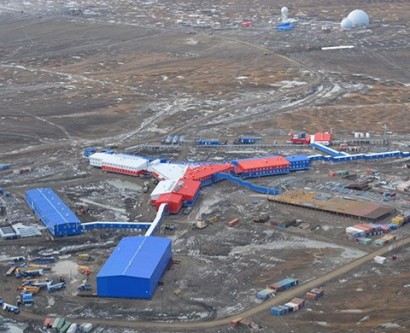Chris Pook said:
And Canada doesn't need defending. Nobody wants the North. Not even Canadians.
http://www.telegraph.co.uk/news/worldnews/europe/russia/11944219/Russia-builds-massive-Arctic-military-base.html
20 Oct 2015
Russia's defence ministry said on Tuesday it has built a giant military base in the far northern Arctic where 150 soldiers can live autonomously for up to 18 months.
The ministry said the building erected on the large island of Alexandra Land, which is part of the Franz Josef Land archipelago, is 97 per cent complete.
Named the "Arctic Trefoil", or three-lobed leaf, the sprawling three-pointed structure is coloured red white and blue like the Russian flag.
The base is a permanent structure located on the 80th parallel north and has an area of 14,000 square metres (150,000 square feet).
The building can house 150 soldiers and stock enough fuel and food to let them work there autonomously for a year and a half, the ministry said.
The soldiers can move around the base from one building to another without going outside to face winter temperatures which can reach minus 47 degrees Celsius (-57 degrees Fahrenheit). Fuel can be pumped in from tankers.
Franz Josef Land is a chain of islands between the Barents and Kara seas north of Novaya Zemlya archipelago.
It has maintained a Russian border post but the military presence there was withdrawn in the 1990s. It returned last November, when the Northern Fleet dispatched air defence contingents there.
This year Russia has reopened a landing strip there equipped for large transport planes in order to deliver building materials.
Russia is building up its Arctic military infrastructure as part of a recently updated Naval Doctrine, which proclaims the region as a top priority due to its mineral riches and strategic importance.
Russia has already built a similar military base called the "Northern Shamrock" on Kotelny island in the East Siberian Sea further south on the 75th parallel.
Russia has increasingly asserted itself as an Arctic nation, this year filing a United Nations claim for a vast swathe of the region including the North Pole, and holding war games in the area.
------------------------------------
They sure seem interested in the region to me. 8)





